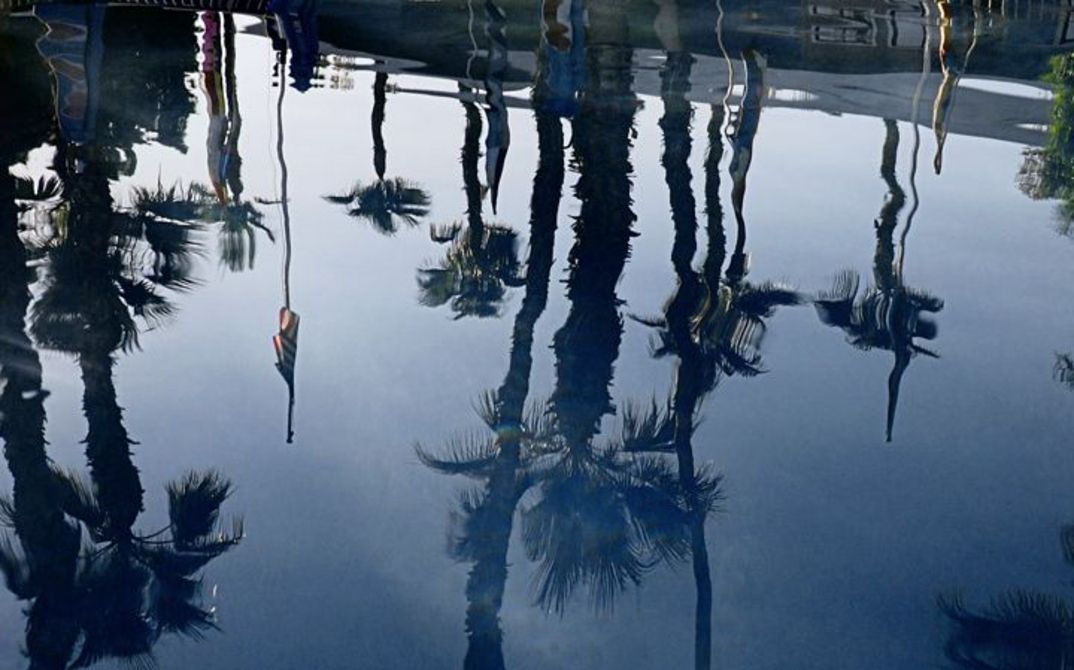For a long time, I wondered what a clapperboard was for. In the era of analogue film, where I first discovered shooting and then editing film (still on a cutting table in those days) back in film school, I realised that the sacrosanct clapperboard was a guarantee of synchronised sound and image, a sort of fetish of verisimilitude, as well as a summary command issued to the viewer: to accept the veracity of the filmic representation, to go along with the fiction, to believe in it. But the sound re-recording process (as systematically practised by auteurs like Bresson) used for “international versions” and dubbed commercial movies posed a challenge to this willing suspension of disbelief. The elements of sound captured in passing in direct cinema, cinéma vérité and underground films and the advent of video (which is synchronised by definition) all conspired to relegate sync sound to the rank of an outmoded special effect. Philippe Garrel’s darkest film plumbs the depths of postmodern depression, leaving the viewer with nothing but the precipices, the white frames and those solitary clapperboards, soundless wooden sticks guaranteeing nothing but the irremediable end of a certain type of cinema: She spent so many hours under the sun lamps, believing... Deep down, nobody believed anymore. The world had already been filmed.
And besides, the women had already called it all into question. Marguerite Duras and Chantal Akerman had already ushered in a far more open-ended narrative relationship between image and sound, between what is said (or left unsaid) and what is shown. I too,leapt into the breach, as did more than a few other penniless gay filmmakers, and found a way out of the sync trap and out of a certain “authoritarian” economy of storytelling: we discovered that we could regain control over the infinite power of cinema, renegotiate the willing suspension of disbelief with the audience, although I still had to find my voice. “Don’t believe the meaning,” said Celan, “believe me!” Poetry, literature, the so-called fine arts had long since jumped on the bandwagon, but the commercial interests at stake and the movie industry’s enormous machinery for spectacle were not about to take it lying down. We had to sneak in and find the cracks. At the time, we spoke of Third cinema or creative documentaries. But our lethal weapon was the voice. My voice.
Forget the explanatory commentary, the use of the voiceover as an extra narrative tool in documentaries. The idea was to play with the voice like you do with the shot, to play with the “I”, “you”, “he”, “she”. To film a street in ROME, DÉSOLÉE, for example, through the prism of a memory that took place there, or somewhere around there. To film my titular neighbourhood in Paris in BONNE NOUVELLE and populate it with people I’d met or loved, with stories told by my voice – and sometimes contradicted by the voices of two others, friends. The point is not to cheat, but to strive for a kind of truthfulness. Nothing is really prescribed: the voice, or rather the voices in film, must grow out of the images – perhaps to experience a different kind of synchronicity: not of lips, but of meaning? The film finds its counterpoint in the editing. And the viewer will be moved if for a moment they can grasp the musical “truth” of the film, when they can intervene in the images, the direct sound and the voiceover, it will renew the suspension of disbelief. This amplifies the impact of the images in turn and elevates the soundtrack from the status of an accompaniment to that of a character in its own right. After seeing BOLOGNA CENTRALE, an Italian artist told me I’d come up with a unique form of “pure contemporary poetry”. I nearly wept with joy. Find your voice – without looking too hard for it.
THIS IS THE END is a consummation of sorts, in which I have freely broken with my own voice/image approach. Two languages intertwine here, the English of the American poets and the French of my own uneasy voice – sometimes also framed by the voice of my film partner Eva Truffaut (with whom I conversed in Jaurès) reading out Bruce Bégout’s damning remarks about urban blight against a backdrop of swimming-pool blue. The poetry, the last democratic voice left in Los Angeles, is filmed live, in sync: it’s fragile, embodied, sometimes inhibited. The prophetic voice of the poetry become incarnated on the screen (in queer, ethnic, mixed-race, old and young bodies). The lover and I sometimes appear on screen, but my voice remains in voiceover and omnipotent, moving onwards with the film, with Los Angeles. As if created by the images, the voice is sometimes interrupted by a car or a helicopter. Producing drafts of a script one day at a time, we edited it, chopped it up and scattered the pieces all over the City of Angels. A definitive version wasn’t recorded till the end, between the editing and the sound mixing. I now know that this art of collage, these multi-layered films, invite viewers to embark on a sort of archaeological dig, to dig deep into their own experience, beneath the shots and the words. And I know that they’ll be able to relate to this strange exercise in freedom, which is denied them by most mainstream movies. To find their own voice in turn and perhaps put their finger on the pulse of their time or contemplate its finite beauty.
Vincent Dieutre is a director, film journalist, book editor and translator. Many of his films have been invited to the Berlinale Forum, most recently JAURÈS (2012) and THIS IS THE END (2023).
